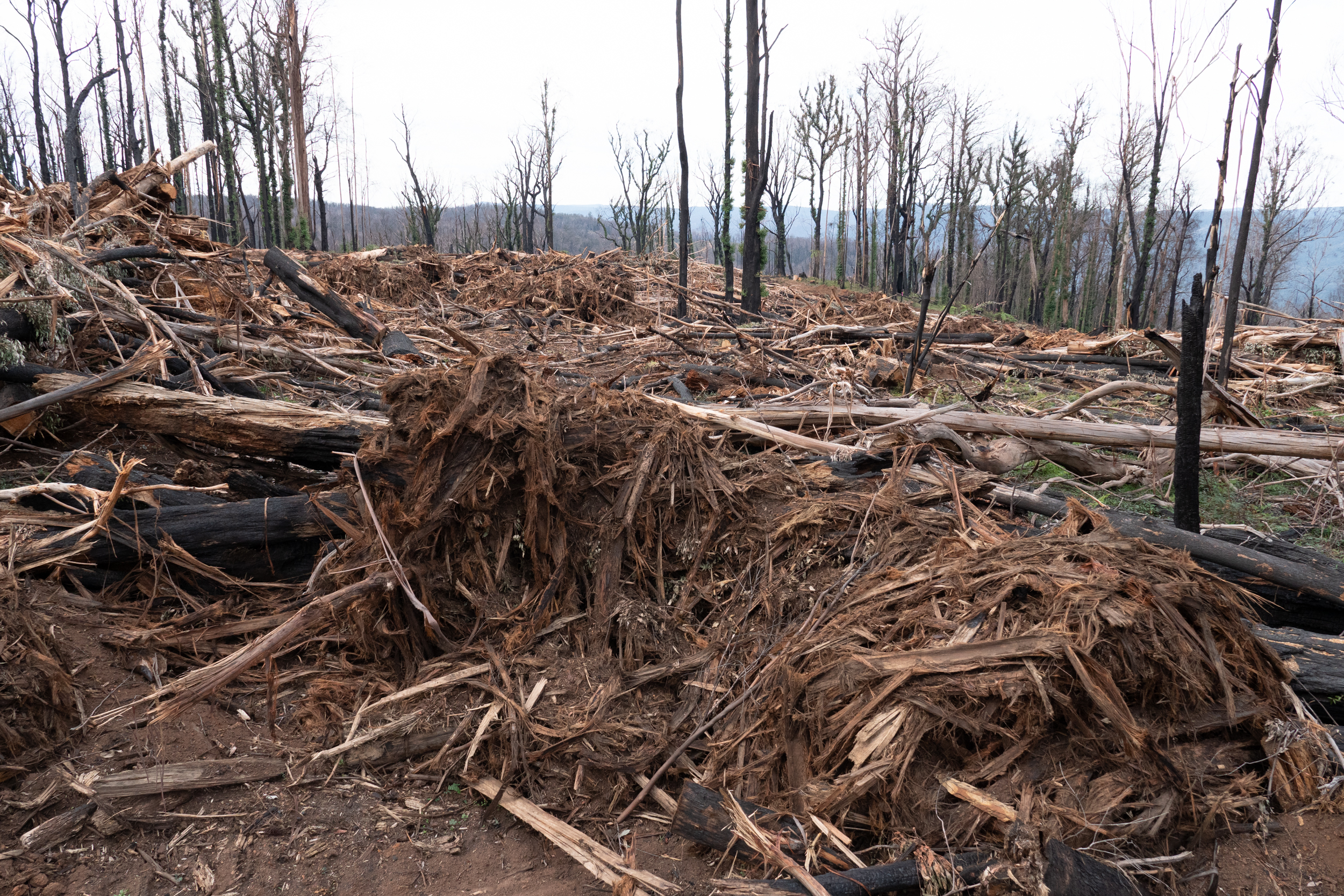The Large Brown Tree Frog, Litoria littlejohni, endemic to south-eastern Australia has been split into 2 species, now Litoria littlejohni and newly named Litoria watsoni, halving its distribution and population. But state-owned logging company VicForests is currently logging just over 200m away from a detection site of the frog in the Yalmy catchment on Mt Jersey in East Gippsland, and have cleared the vegetation and installed a gate where the frog was found. Mt Jersey was heavily impacted by fire, but Orbost spiny crayfish and a Yellow-bellied Glider were found within the logging area only a few months ago. Long-footed Potoroos were also found pre-fires.
The Large Brown Tree Frog was thought to be extinct in Victoria for over 20 years when it was rediscovered in 2015 by Goongerah Environment Centre citizen scientist and ecologist Rena Gaborov. East Gippsland is a stronghold for the species, which prefers wet and damp forests. According to the government’s biodiversity impacts report 88% of its known habitat in East Gippsland is within the 2019/2020 fire extent.
Read The Age coverage of the story here.

Newly discovered Litoria watsoni found on Mt Jersey
Its range once extended from the Wattagans near Newcastle,, down to East Gippsland, but researchers in NSW have reviewed genetics, morphology and calls and found frogs south of Sydney into East Gippsland are a separate species, far less common than its relative North of Sydney. Research shows a clear trajectory of decline in the southern species, which has been rare and difficult to find. Not much is known about the ecology or home range of this species away from breeding sites and in Victoria breeding success has rarely been documented in recent years (less than 5 sites).
The frog is classified as vulnerable under federal legislation and listed as endangered in Victoria on the Scientific Advisory List, but the government have just released a draft upgrading its status to critically endangered. There is no federal recovery plan for the species, but in Victoria a 28ha Special Protection Zone (SPZ) is placed around detection sites.

Salvage logging on Mt Jersey just 200m away from the detection site of the endangered Large Brown Tree Frog
A Special Protection Zone has been established for the LBT, but it does not meet the requirements of the action statement that the reserve cannot be less than 300m wide at any point. VicForests are logging right up to the boundary of the SPZ, which falls far short of the minimum protection requirements, which must be put in place by law. The Department of Environment, Land, Water and Planning are responsible for the establishment of logging free zones when threatened species are detected, but have failed in this instance to provide the proper protections, and now VicForests is logging in critical LBTF habitat.
You can take action by emailing the minister here or call her today on 03 9637 9504 and tell her to push the Department to properly protect the frog and stop the logging.
 Map depicting Department's SPZ for the LBTF which fails to meet the prescriptions in the Action Statement
Map depicting Department's SPZ for the LBTF which fails to meet the prescriptions in the Action Statement
Map produced by Fauna and Flora Research Collective
Due to the limited distribution and habitat of the new species and the impacts of the 2019/2020 bushfires it is likely the conservation status of the frog will be reassessed and upgraded. According to research fire frequency is a serious threat to the species, although there was a finding that some known records of Litoria littlejohni persisted after wildfire.
Other major threats to the species include climate change (reduced rainfall, increased temperatures, more frequent and severe droughts, and bushfire events), and habitat fragmentation and degradation from logging. Researchers believe one of the main threats to L. watsoni aka littlejohni is Amphibian Chytrid Fungus an infectious disease that have caused extinctions and massive declines to many frog species globally. The fungus is extremely hard to kill in the landscape and can be transported in dirt making logging machinery particularly threatening as it may act as a vector transporting large amounts dirt from one place to another. Logging will also directly kill individual frogs sheltering in the forest landscape.

Destructive logging in sensitive fire-affected areas which still provide critical habitat for threatened species, Mt Jersey East Gippsland
Statement from Goongerah Environment Centre (GECO):
“The Large Brown Tree Frog was presumed extinct just 5 years ago before it was rediscovered by GECO volunteer ecologist Rena Gaborov. The Victorian government has just drafted the species as critically endangered. Now it's been classified as a separate species making it even more rare. The fact that logging is going ahead in its habitat is unthinkable”
“It's the Environment Department’s job to put in a protection zone for the species, but they’ve sandwiched it right up against a logging coupe, less than a few hundred metres from where the frog was found. It doesn’t meet the requirements for the protected area under law, and prioritises logging over protection of the species.”
“The government makes rules that don’t properly protect threatened wildlife, and then don’t even follow them. Logging will push this incredibly rare and unique species to the brink of extinction. If the government continues to log these forests, then we risk losing these animals forever.”
Contact:
Chris Schuringa
0418 912 625
